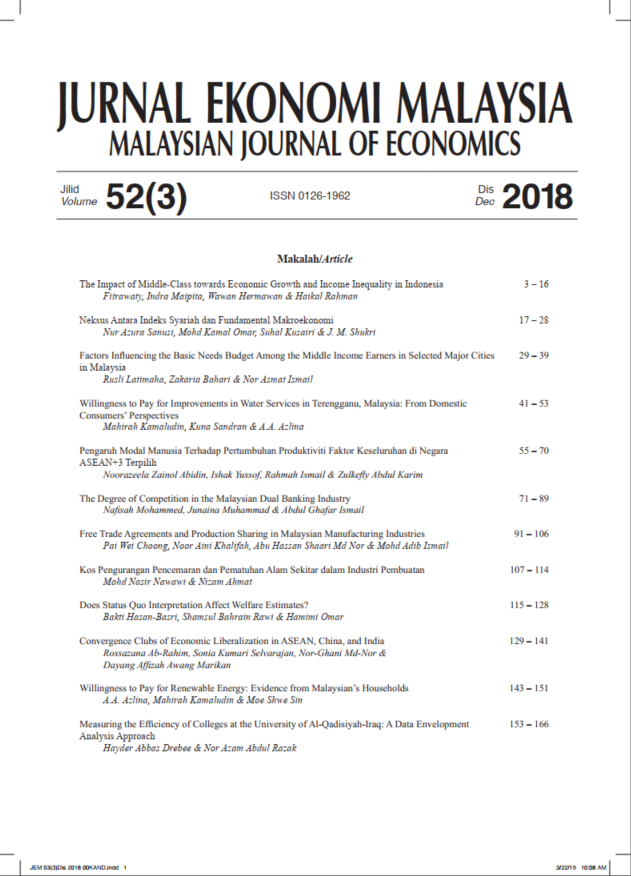Jurnal Ekonomi Malaysia
52 (3) 2018 167 – 179
Ministry of International Trade and Industry
Menara MITI, No. 7
Jalan Sultan Haji Ahmad Shah
50480 Kuala Lumpur
MALAYSIA
Jabatan Ekonomi
Fakulti Ekonomi dan Pengurusan
Universiti Putra Malaysia
43400 UPM Serdang Selangor
MALAYSIA
Jabatan Ekonomi
Fakulti Ekonomi dan Pengurusan
Universiti Putra Malaysia
43400 UPM Serdang Selangor
MALAYSIA
Jabatan Ekonomi
Fakulti Ekonomi dan Pengurusan
Universiti Putra Malaysia
43400 UPM Serdang Selangor
MALAYSIA
Abstract
Export has been considered as main contributor to economic growth in which also known as export-led growth (ELG) hypothesis. The purpose of this study is to identify the export-led growth nexus in Malaysia. Specifically, this study focuses on disaggregated level of exports such as export of goods and manufactured sectors. By using ARDL co-integration technique for data that covers from 1980 to 2015, the result discovers that exports have positive impact on economic growth, particularly at disaggregated levels of exports namely exports of goods and export of manufactured sectors. This further supports the validation of the export-led growth hypothesis, especially in small, open and dynamic economy like Malaysia. From policy point of view, Malaysia policy makers should give special focus to search for better catalyst of exports promotion strategy to continuously and effectively promote long-term economic growth.
Keywords
Bibliography
@article{amjad2018export,
title={Export-led Growth Hypothesis in Malaysia: New Evidence Using Disaggregated Data of Exports},
author={Amjad, Y. and Naseeem, N.A.M and Azman-Saini, W.N.W. and Masron, tajul and Kriskkumar, K.},
journal={Jurnal Ekonomi Malaysia},
volume={52},
number={3},
pages={167—179},
}
Receive updates when new articles are published.


